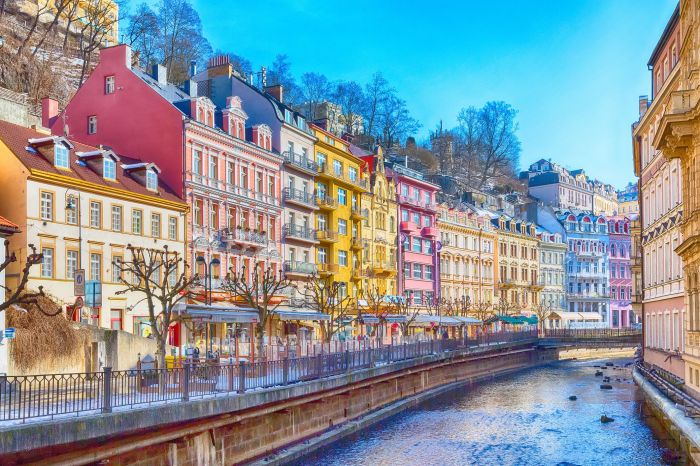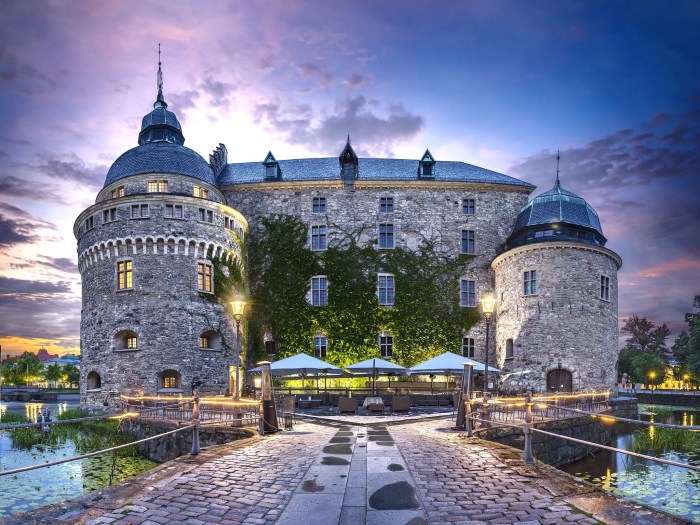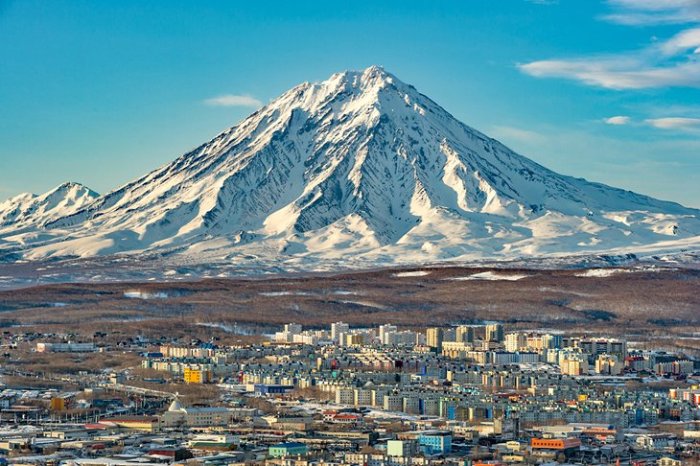Top 10 Underrated Capitals To Visit In Europe
Tired of the usual tourist traps? Top 10 Underrated Capitals To Visit In Europe takes you off the beaten path, introducing you to cities that offer a unique blend of history, culture, and affordability. These hidden gems, often overlooked by the masses, boast stunning architecture, vibrant nightlife, and a charm that will leave you wanting more.
We’ve compiled this list based on factors like historical significance, architectural beauty, cultural offerings, and overall value for money. Get ready to discover the unexpected, as we uncover some of Europe’s most captivating and surprisingly accessible capitals.
Underrated European Capitals
Europe is a continent brimming with iconic cities, each with its own unique charm and allure. However, beyond the well-trodden paths of Paris, Rome, and London, lie hidden gems – underrated capitals that offer an equally captivating experience. These cities, often overlooked by the tourist masses, provide a chance to delve deeper into Europe’s cultural tapestry, discover hidden treasures, and experience a more authentic side of the continent.
This list focuses on European capitals that have been rated as “underrated” based on a combination of factors, including:* Tourist Popularity:Cities with relatively low tourist numbers compared to other European capitals.
Cultural Significance
Cities with rich history, art, and cultural heritage that are often overlooked.
Quality of Life
Cities with high livability scores and a vibrant urban atmosphere.
Affordability
Cities with a more budget-friendly cost of living compared to more popular destinations.
Underrated European Capitals
These cities offer a unique blend of history, culture, and affordability, providing a more authentic European experience:
- Ljubljana, Slovenia: Nestled in the heart of Slovenia, Ljubljana is a charming city with a vibrant cultural scene, picturesque architecture, and a relaxed atmosphere. Its compact size makes it easy to explore on foot, and the Ljubljanica River flows through the city, adding to its beauty.
- Budapest, Hungary: Budapest, the capital of Hungary, is a city of stunning architecture, thermal baths, and a rich history. Its iconic bridges, such as the Chain Bridge, offer breathtaking views of the city. Budapest is also renowned for its vibrant nightlife and affordable prices.
- Prague, Czech Republic: Prague, the capital of the Czech Republic, is a city of medieval charm, with a stunning Old Town Square, Prague Castle, and a network of cobblestone streets. It is also a city of art, music, and culture, with a thriving theater scene and numerous museums.
- Tallinn, Estonia: Tallinn, the capital of Estonia, is a charming city with a well-preserved medieval old town, cobblestone streets, and stunning architecture. It is also a city of technology and innovation, with a thriving startup scene.
- Vilnius, Lithuania: Vilnius, the capital of Lithuania, is a city of baroque architecture, charming churches, and a vibrant cultural scene. It is also a city of history, with a rich past dating back to the 14th century.
- Riga, Latvia: Riga, the capital of Latvia, is a city of Art Nouveau architecture, charming cobblestone streets, and a lively cultural scene. It is also a city of history, with a rich past dating back to the 13th century.
- Zagreb, Croatia: Zagreb, the capital of Croatia, is a city of contrasts, with a modern urban center and a charming old town. It is also a city of culture, with numerous museums, theaters, and art galleries.
- Belgrade, Serbia: Belgrade, the capital of Serbia, is a city with a rich history, stunning architecture, and a vibrant nightlife. It is also a city of contrasts, with a modern urban center and a charming old town.
- Sofia, Bulgaria: Sofia, the capital of Bulgaria, is a city with a rich history, stunning architecture, and a vibrant cultural scene. It is also a city of contrasts, with a modern urban center and a charming old town.
- Bucharest, Romania: Bucharest, the capital of Romania, is a city of contrasts, with a modern urban center and a charming old town. It is also a city of history, with a rich past dating back to the 14th century.
Ljubljana, Slovenia
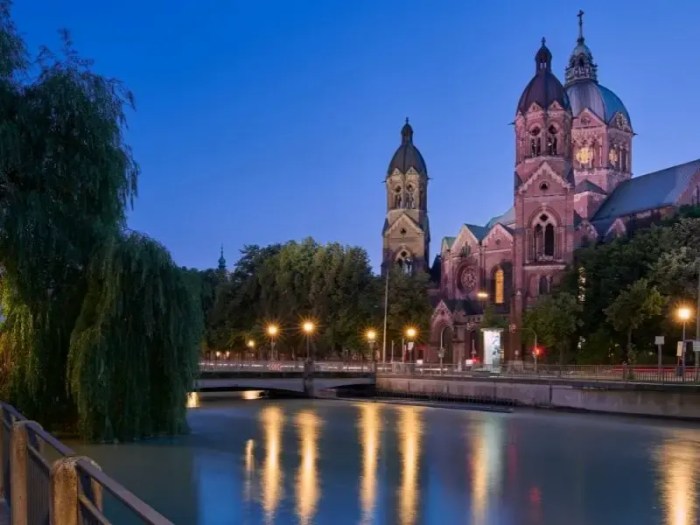
Ljubljana, Slovenia’s capital, is a charming city that effortlessly blends historical charm with modern vibrancy. It’s a place where you can wander through cobblestone streets lined with colorful buildings, marvel at the stunning architecture, and enjoy a laid-back atmosphere. While it might not be as well-known as some other European capitals, Ljubljana offers a unique blend of affordability, accessibility, and cultural richness that makes it a truly special destination.
Ljubljana’s Architectural Tapestry, Top 10 Underrated Capitals To Visit In Europe
Ljubljana’s architectural landscape is a fascinating mix of historical and modern influences. The city’s Old Town, a UNESCO World Heritage Site, is a treasure trove of medieval buildings, including Ljubljana Castle, a 11th-century fortress perched atop a hill overlooking the city.
The castle offers breathtaking views of Ljubljana and the surrounding countryside. The city’s central square, Prešeren Square, is surrounded by elegant Baroque buildings, including the Franciscan Church and the Three Bridges. The Three Bridges, a series of interconnected bridges over the Ljubljanica River, are a testament to the city’s architectural ingenuity.
So you’re thinking about visiting some cool European capitals, huh? There are tons of hidden gems out there that don’t get the same hype as Paris or Rome. If you’re looking for something a little different, you might want to check out some of the awesome natural wonders in Iceland, like the Blue Lagoon or the Northern Lights.
Top 10 Places To Visit in Iceland has some great recommendations. Once you’ve gotten your fill of Icelandic landscapes, you can come back to Europe and explore those underrated capitals!
- The architecture of Ljubljana is a unique blend of styles, from medieval to Baroque to Art Nouveau.
- The city’s bridges are a major part of its architectural charm, including the iconic Triple Bridge, designed by Jože Plečnik, one of the most influential Slovenian architects.
- Ljubljana Castle is a must-visit for its historical significance and panoramic views of the city.
Ljubljana’s Cultural Scene
Ljubljana’s cultural scene is as vibrant as its architecture. The city is home to numerous museums, art galleries, theaters, and concert halls. The National Museum of Slovenia houses a vast collection of artifacts from Slovenia’s rich history and culture.
The Museum of Modern Art, known as Moderna galerija, features contemporary Slovenian art. Ljubljana is also known for its lively festivals, including the Ljubljana Festival, which showcases a diverse range of performances, from classical music to theater and dance.
The city’s streets come alive with music and art during the annual Ljubljana Summer Festival, featuring a wide array of events, including concerts, exhibitions, and street performances.
- The Ljubljana Festival is a major cultural event that draws visitors from around the world.
- The city is home to several world-class museums, including the National Museum of Slovenia, the Museum of Modern Art, and the City Museum of Ljubljana.
- Ljubljana is known for its vibrant street art scene, with colorful murals adorning many buildings throughout the city.
Ljubljana’s Affordability and Accessibility
Ljubljana is a surprisingly affordable city, especially compared to other European capitals. You can enjoy delicious meals, stay in comfortable accommodations, and explore the city’s attractions without breaking the bank. The city is also very walkable, with most of its major attractions within easy reach.
Ljubljana is well-connected by public transportation, with a reliable bus and tram network that makes getting around a breeze.
- Ljubljana’s cost of living is relatively low, making it an attractive destination for budget-conscious travelers.
- The city is highly walkable, with a compact center that can be explored on foot.
- Ljubljana has a well-developed public transportation system, including buses, trams, and trains, making it easy to get around.
Tallinn, Estonia
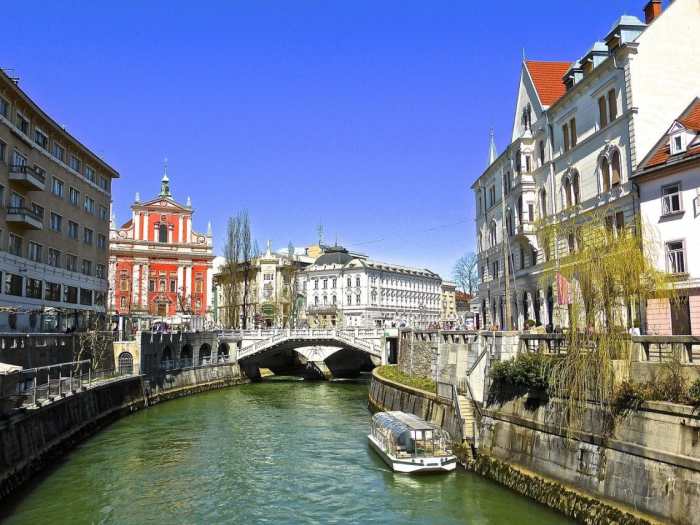
Tallinn, the capital of Estonia, is a captivating city that seamlessly blends medieval charm with modern innovation. A vibrant and energetic city, Tallinn is a hidden gem that often gets overlooked in favor of its more popular European counterparts.
But Tallinn is worth a visit, offering a unique experience for any traveler.
Tallinn’s Medieval Old Town
Tallinn’s Old Town, a UNESCO World Heritage Site, is a remarkable testament to the city’s rich history. With cobblestone streets, colorful buildings, and a charming atmosphere, the Old Town transports visitors back to a bygone era.
“Tallinn’s Old Town is a unique and well-preserved example of a medieval European city, with its fortified walls, towers, churches, and guildhalls. It is a place where history comes alive.”
UNESCO World Heritage Committee
The Old Town is home to several notable landmarks, including:
- Alexander Nevsky Cathedral:A striking example of Russian Orthodox architecture, the cathedral is a prominent landmark in the Old Town.
- St. Nicholas’ Church:One of the oldest churches in Tallinn, St. Nicholas’ Church is a beautiful example of Gothic architecture.
- Town Hall Square:The heart of the Old Town, Town Hall Square is a bustling hub of activity, with street performers, restaurants, and shops.
- The Viru Gate:A well-preserved medieval gate, the Viru Gate offers a glimpse into the city’s past.
Tallinn’s Thriving Tech Scene
Tallinn is a hub of innovation and technology, with a thriving tech scene that attracts entrepreneurs, investors, and developers from around the world. The city has earned the nickname “e-Estonia” for its advanced digital infrastructure and commitment to e-governance. Tallinn’s tech scene is fueled by a number of factors:
- Skilled Workforce:Estonia has a highly educated population, with a strong emphasis on STEM education.
- Government Support:The Estonian government has actively supported the development of the country’s tech sector, providing funding and incentives for startups and businesses.
- Entrepreneurial Culture:Tallinn has a strong entrepreneurial culture, with a vibrant startup ecosystem that encourages innovation and risk-taking.
Tallinn’s Modern Architecture
Tallinn is not just about its medieval past; it also boasts a vibrant modern architecture scene. The city’s skyline is dotted with contemporary buildings, showcasing a blend of styles and designs. Tallinn’s modern architecture is characterized by:
- Sustainable Design:Tallinn’s modern buildings are often designed with sustainability in mind, incorporating green technologies and energy-efficient materials.
- Innovative Materials:Architects in Tallinn are constantly experimenting with new materials and construction techniques, resulting in unique and eye-catching buildings.
- Integration with the Old Town:Modern buildings are often designed to complement the city’s historic architecture, creating a harmonious blend of old and new.
Budapest, Hungary
Budapest is a city that seamlessly blends history, culture, and relaxation, making it a must-visit destination for any traveler. It’s a place where you can explore stunning architecture, soak in thermal baths, and experience a vibrant nightlife.
Stunning Architecture
Budapest boasts a captivating collection of architectural masterpieces that reflect its rich history.
The Hungarian Parliament Building
The Hungarian Parliament Building is a true icon of Budapest, and its neo-Gothic style makes it one of the most beautiful buildings in Europe. It sits on the banks of the Danube River and offers stunning views of the city.
Buda Castle
Buda Castle is a UNESCO World Heritage Site and is a must-see for any visitor to Budapest. It sits on Castle Hill, offering panoramic views of the city.
Thermal Baths
Budapest is renowned for its thermal baths, which have been a part of the city’s culture for centuries.
The Benefits of Thermal Baths
The thermal baths are believed to have therapeutic benefits, including relaxation, pain relief, and improved circulation.
Popular Thermal Baths
Some of the most popular thermal baths in Budapest include Széchenyi Thermal Baths, Gellért Thermal Baths, and Rudas Baths.
Vibrant Nightlife
Budapest has a vibrant nightlife scene, with a wide range of bars, clubs, and restaurants to choose from.
Ruin Bars
Ruin bars are a unique feature of Budapest’s nightlife. These bars are located in abandoned buildings that have been transformed into eclectic and atmospheric spaces.
Live Music
Budapest is home to a thriving live music scene, with venues hosting a variety of musical genres.
Prague, Czech Republic
Prague, a city steeped in history and brimming with captivating architecture, is often overlooked in favor of its more popular European counterparts. However, this charming Czech capital offers a unique blend of history, culture, and affordability, making it an ideal destination for budget-conscious travelers seeking an authentic European experience.
Prague’s Rich History and Architecture
Prague’s history is evident in its stunning architecture, which spans centuries and styles. From the iconic Prague Castle, perched atop a hill overlooking the city, to the elegant Charles Bridge, spanning the Vltava River, Prague is a treasure trove of architectural wonders.
Prague Castle, a UNESCO World Heritage Site, is the largest ancient castle complex in the world, and its sprawling grounds are home to numerous churches, palaces, and museums. The Charles Bridge, built in the 14th century, is lined with Baroque statues and offers breathtaking views of the city.
Prague’s Affordability and Cuisine
Prague is known for its affordable prices, making it a budget-friendly destination. Food, drinks, and accommodation are significantly cheaper than in other major European cities. Prague’s cuisine is a delightful blend of traditional Czech dishes and international influences. Be sure to try the famous Czech beer, Pilsner Urquell, and indulge in traditional specialties like goulash, dumplings, and roasted pork.
Zagreb, Croatia
Zagreb, the capital of Croatia, is a city that effortlessly blends historical charm with modern vibrancy. Its cobblestone streets and grand architecture whisper tales of a rich past, while its bustling squares and contemporary art scene showcase a city embracing the future.
The City’s Unique Blend of History and Modernity
Zagreb’s captivating cityscape is a testament to its multifaceted character. The Upper Town (Gornji Grad), a historic district perched on a hill, features medieval churches, quaint cafes, and charming squares. The Lower Town (Donji Grad), built in the 19th century, boasts grand avenues lined with Art Nouveau buildings, theaters, and museums.
This juxtaposition of architectural styles creates a captivating visual narrative that speaks to the city’s rich history and forward-looking spirit.
Zagreb’s Vibrant Cultural Scene
Zagreb is a city that thrives on its vibrant cultural scene. Museums and art galleries showcase the city’s artistic heritage and contemporary creativity. The Museum of Contemporary Art (MSU) presents a diverse collection of modern and contemporary art, while the Croatian National Theatre offers world-class performances of opera, ballet, and drama.
Zagreb’s cultural landscape is further enriched by numerous theaters, concert halls, and art studios, making it a hub for creative expression.
Zagreb’s Affordability and Uniqueness
Zagreb offers a unique blend of history, culture, and affordability. Compared to other European capitals, Zagreb offers a more budget-friendly experience, making it an attractive destination for travelers seeking value for their money. The city’s charming atmosphere, its vibrant cultural scene, and its well-preserved historical sites make Zagreb a captivating destination for those seeking a unique and authentic European experience.
Riga, Latvia
Riga, Latvia, is a charming Baltic city that blends history, culture, and affordability. It offers a unique experience for travelers looking for a European destination with a distinctive personality.
Art Nouveau Architecture
Riga boasts a remarkable collection of Art Nouveau architecture, recognized by UNESCO as a World Heritage Site. The city’s Art Nouveau district, known as the “Jugendstil” district, features over 800 buildings constructed in the late 19th and early 20th centuries.
This architectural style, characterized by its elegant curves, intricate details, and vibrant colors, is a testament to Riga’s artistic heritage. The buildings in this district are a visual feast, showcasing the creativity and artistry of the era.
Cultural Scene
Riga offers a vibrant cultural scene that reflects its rich history and diverse influences. The city is home to numerous museums and art galleries, each showcasing a unique perspective on Latvian art and culture. The Latvian National Museum of Art, for example, houses a comprehensive collection of Latvian art from the 17th century to the present day.
The Riga Art Nouveau Center, housed in a stunning Art Nouveau building, provides insights into the history and development of this architectural style. Riga also has a thriving theater scene, with performances ranging from traditional Latvian plays to contemporary international productions.
The Latvian National Opera and Ballet, located in a magnificent neoclassical building, is renowned for its exceptional performances.
Vilnius, Lithuania
Vilnius, Lithuania’s charming capital, is often overlooked by travelers who head straight to the more popular Baltic destinations of Riga and Tallinn. But this hidden gem offers a unique blend of history, culture, and affordability, making it a perfect choice for budget-conscious adventurers seeking an authentic European experience.
If you’re looking for a European adventure off the beaten path, check out our list of the Top 10 Underrated Capitals To Visit In Europe. You might be surprised by some of the hidden gems you find! For another travel adventure, you could always explore the beautiful Swiss Alps, and maybe even check out our list of the Top 25 Places To Visit in Switzerland before you go.
After you’ve explored Switzerland, you can get back to discovering those cool, less-known European capitals.
A Glimpse into the Past: Vilnius’s Historic Old Town
Vilnius’s Old Town, a UNESCO World Heritage Site, is a captivating labyrinth of cobblestone streets, baroque churches, and grand palaces, showcasing the city’s rich history. The heart of the Old Town is the Town Hall Square, a bustling hub surrounded by vibrant cafes, restaurants, and shops.
Exploring Vilnius’s Cultural Scene
Vilnius boasts a vibrant cultural scene that reflects its unique blend of Eastern and Western influences. The city is home to numerous museums and art galleries that showcase Lithuania’s artistic heritage. The Lithuanian National Museum of Art, housed in a stunning 18th-century palace, offers a comprehensive overview of Lithuanian art from the Middle Ages to the present day.
Luxembourg City, Luxembourg
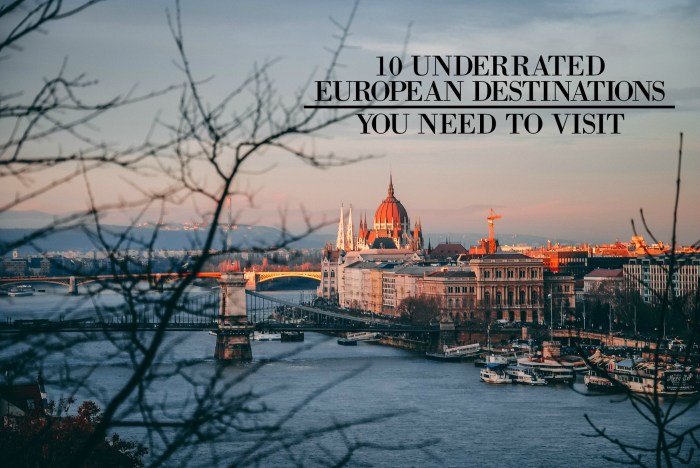
Luxembourg City is a hidden gem, a place where medieval charm meets modern sophistication. It’s a city that seamlessly blends history, culture, and nature, offering a unique and unforgettable experience for travelers.
Luxembourg City’s Unique Blend of Medieval and Modern Architecture
Luxembourg City’s skyline is a captivating mix of the old and the new. The city’s historic heart is a UNESCO World Heritage Site, boasting impressive medieval fortifications, including the Bock Casemates, a network of underground tunnels and chambers dating back to the 17th century.
You know how everyone always talks about Paris and Rome? Yeah, those are cool, but if you want a more unique European adventure, check out some of the underrated capitals. There’s so much to see beyond the typical tourist spots, and you can get a real feel for the local culture.
If you’re looking for some inspiration, check out this list of the Top 10 Places To Visit In Europe , which includes some awesome capitals you might not have even heard of. Seriously, you won’t regret ditching the crowds and exploring some of these hidden gems!
These fortifications, a testament to Luxembourg’s strategic importance, offer a glimpse into the city’s rich past. However, amidst this medieval grandeur, modern architecture flourishes, creating a dynamic contrast. The Grand Ducal Palace, the official residence of the Grand Duke of Luxembourg, stands as a striking example of modern architecture.
It’s a beautiful example of how Luxembourg City embraces its past while looking towards the future.
Sofia, Bulgaria
Sofia, Bulgaria, is a city steeped in history, boasting ancient Roman ruins and a captivating blend of Eastern European and Ottoman influences. It’s a city where the echoes of the past reverberate through its cobbled streets and grand architecture.
While often overlooked in favor of its neighboring European capitals, Sofia offers a unique charm and a surprisingly affordable travel experience.
Sofia’s Ancient History and Architecture
Sofia’s history stretches back to the 7th century BC, when it was known as Serdica. The city flourished under Roman rule, and its legacy is evident in its well-preserved Roman ruins, such as the remains of the Serdica Amphitheatre and the ancient Roman baths.
Today, Sofia is a vibrant metropolis, seamlessly blending its ancient heritage with modern life.The Alexander Nevsky Cathedral, a magnificent example of Russian Revival architecture, stands as a testament to Sofia’s architectural splendor. Completed in 1912, the cathedral features intricate mosaics, gilded domes, and a towering bell tower.
It’s a must-visit for any visitor to Sofia, offering a glimpse into the city’s rich cultural heritage.
Sofia’s Cultural Scene
Sofia’s cultural scene is as diverse as its history. The city boasts a wealth of museums, art galleries, and theaters that showcase the best of Bulgarian art and culture. The National Art Gallery houses an impressive collection of Bulgarian and European art, spanning centuries of artistic expression.
The National Museum of History, housed in a grand 19th-century building, tells the story of Bulgaria from its ancient origins to the present day. Sofia is also a city of music and theater. The Bulgarian National Opera and Ballet is renowned for its high-quality performances, while the Sofia Philharmonic Orchestra delights audiences with its world-class classical music.
Sofia’s Affordability
Sofia offers a unique blend of history, culture, and affordability. The city is known for its relatively low cost of living, making it an attractive destination for budget-conscious travelers. From delicious and affordable traditional Bulgarian cuisine to budget-friendly accommodations, Sofia offers a range of options for travelers of all budgets.
Conclusion
So, there you have ita tour of some of Europe’s most underrated capitals. From the charming cobblestone streets of Ljubljana to the vibrant nightlife of Budapest, these cities offer a unique blend of history, culture, and modern amenities. These capitals provide an alternative to the usual tourist traps, offering a more authentic and immersive experience.
You can explore historic landmarks, indulge in local cuisine, and immerse yourself in the local culture without the crowds and inflated prices.
Why Underrated Destinations Offer a Unique Experience
Underrated destinations often offer a more authentic and immersive experience compared to their more popular counterparts. Here’s why:
- Fewer Crowds:This means you can enjoy attractions and landmarks without the hordes of tourists, allowing for a more peaceful and enjoyable experience.
- Lower Prices:Accommodation, food, and activities tend to be more affordable in less popular destinations.
- More Local Flavor:You’ll encounter more locals and experience a more authentic glimpse into the local culture and way of life.
- Hidden Gems:Underrated destinations often harbor hidden gems, unique attractions, and lesser-known historical sites that you might not find in more popular tourist hotspots.
Last Word
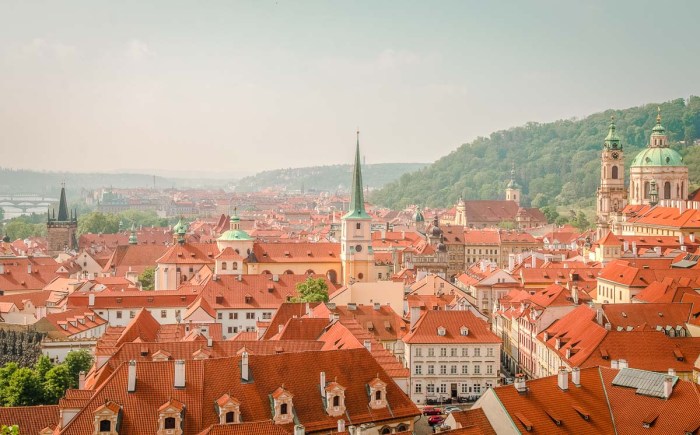
So, ditch the crowds and embrace the adventure! These underrated European capitals offer a chance to experience Europe in a fresh and authentic way. From the medieval charm of Tallinn to the vibrant energy of Budapest, these cities promise unforgettable experiences that will leave you wanting to explore more of Europe’s hidden gems.
Frequently Asked Questions: Top 10 Underrated Capitals To Visit In Europe
What are the best times to visit these cities?
The best time to visit these cities depends on your preferences. Spring and fall offer pleasant weather and fewer crowds, while summer is ideal for outdoor activities and festivals. Winter can be magical, with festive markets and snowy landscapes, but be prepared for colder temperatures.
Are these cities safe for solo travelers?
Generally, these cities are safe for solo travelers, but it’s always wise to exercise common sense and be aware of your surroundings. As with any city, it’s best to research local customs and safety tips before your trip.



